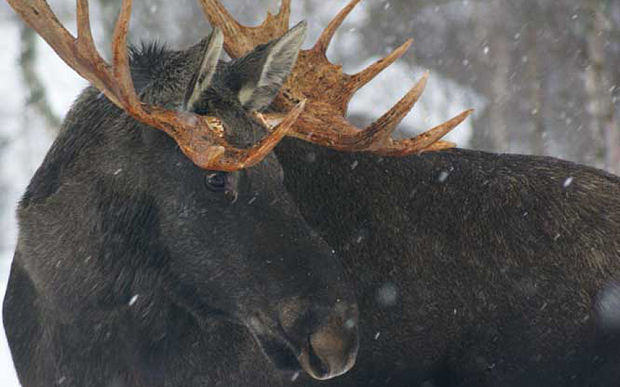
It made European headlines when a pair of hunters mistakenly entered the confines of Norway’s Polar Park Zoo and shot two elk, but sadly, people accidentally kill wild and often endangered animals quite a bit.
Last week two Norwegian hunters called up officials at the northernmost zoo in the world with some seriously bad news. Their tracking dogs had lead them into the zoo’s moose, or elk as they’re known in Norway, enclosure. From there they wound up felling two of the animals through the pen’s fence.
The chief executive of the Polar Park Zoo told The Local that they’re deeply saddened, and there’s nothing OK about the scenario—they’ve gone from an elk population of five to three. But just because the hunter’s were well in the wrong here doesn’t mean this kind of thing doesn’t happen on a regular basis all over the world.
For year’s groups have complained about the toll government agencies take on wildlife. The United States Department of Agriculture is a notorious culprit, last year killing 2,713,570 wild animals from 319 species, though the group most targeted was birds, European starlings to be specific. Last year a hunter in Utah who shot a grey wolf he mistook for a coyote—the first of its species spotted around the Grand Canyon in 70 years—got off scot free.
In August a cull project in New Zealand hoping to thin out the overpopulated pukeko community was halted when marksmen killed four takahe—a species only 300 or so documented-members strong and once thought to be extinct altogether.

Just a few weeks ago the Scottish Natural Heritage asked hunters to make sure they could distinguish what they were shooting before pulling the trigger. Some parts of Caithness are home to Greenland white-fronted geese, currently on the way home from their breeding grounds.
This warning comes after an incredibly rare hen harrier named Annie was already illegally shot in Scotland back in August. And by no means do all incidents occur on land. By catch is an internationally recognised problem. A Dorset fisherman accidentally pulled in a porbeagle shark during breeding season earlier this week.
On a side note, even when people are trying to their best to help out animals, things don’t always go right. Back in 2012 conservationists in South Africa were heartbroken when Spencer the rhino died in front of TV and photography crews there to witness the insertion of a poison capsule into the animal’s horn. In April of this year Channel 4 had to apologise after members of its show The Island slew and then chowed down on a protected American crocodile.
But if you found all this a bit depressing, consider this. Most of these hunting deaths were probably not exactly premeditated, or desired in any way. In fact, these accidents of mistaken identity are not even confined just to animals; earlier this month a hunter killed a student in the south of France because he thought—dressed in brown—the boy was a deer. This isn’t an uncommon event in the country either. During the 2014 hunting season 16 people were killed under similar circumstances.
Let’s face it, in many ways humans aren’t exactly the brightness or sharpest crayons in the animal kingdom’s big box of colouring instruments.
